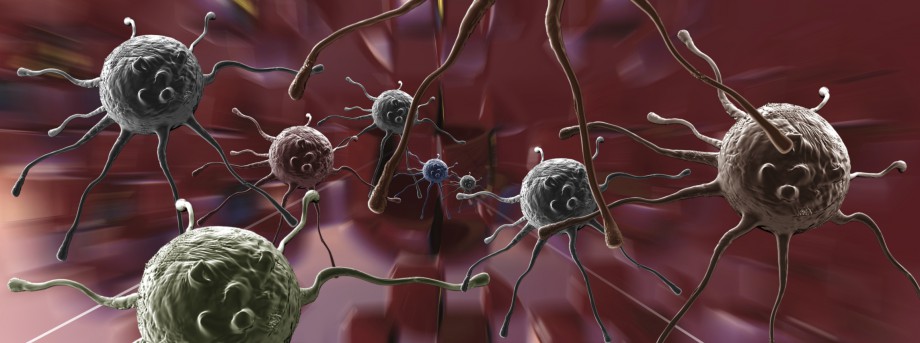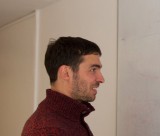The University of Nottingham
 Exchange online
Exchange online
Research Exchange
Developing imaging technologies to improve animal research

The University of Nottingham is to share in £1.5m of research funding to maximise the potential of advanced imaging technologies to reduce animal use in a diverse range of preclinical research applications.
Research, led by Dr Anna Grabowska, an expert in the biological processes of cancer, will utilise near-infrared quantum dots, a type of fluorescent marker, to improve sensitivity and resolution when imaging cancer cells in mice. The technology would overcome the current difficulties associated with imaging at a deep-tissue level, and enable repeat imaging of the same animal over time.
The strategic funding from the National Centre for the Replacement, Refinement and Reduction of Animals in Research (NC3Rs), in collaboration with the Engineering and Physical Sciences Research Council (EPSRC), follows the identification of eight key technology challenges by leading researchers in the imaging field, which once overcome will enable preclinical imaging to both meet the needs of the bioscience sector and impact on the 3Rs.
The two Nottingham projects funded by the NC3Rs ‘Imaging Technology Development for the 3Rs’ strategic funding call are:
1. Ultrasound mediated bioluminescence tomography for high sensitivity, high spatial resolution 3D imaging led by Stephen Morgan, Professor of Biomedical Engineering in the Division of Electrical Systems and Optics.
2. Dr Anna Maria Grabowska, from the School of Medicine, will lead a project to develop targeted, radiolabelled near-infrared quantum dots for high sensitivity and resolution, dual modality imaging of human tumours in mice.
Improving animal research and outcomes for patients
Dr Grabowska said: “Our work aims to develop more refined pre-clinical models of cancer which can be used, during the early phases of drug development, to predict which anti-cancer molecules are most likely to be beneficial in patients. This funding will enable us to develop advanced imaging tools that will enhance the information that can be gained from the models, including real-time measurement of growth and response to drugs. Ultimately, this should accelerate progress in moving effective drugs into the clinic where they can improve outcomes for patients.”
Researchers estimate that the refined pre-clinical cancer models made possible by this new imaging technique could reduce animal use in cancer studies by approximately 170,000 per year.
Replacing, reducing and refining the use of animals in science
The NC3Rs funding will support five research projects to increase the utility of a broad spectrum of imaging techniques, including bioluminescence, radio labelling and implantable technology. The projects aim to extend the use of imaging technologies in applications not currently possible with a view to improving animal research, for example by using non-invasive imaging, which minimises suffering, or longitudinal imaging throughout the study, which reduces the number of animals required.
Commenting on the awards, Dr Vicky Robinson, Chief Executive of the NC3Rs, said:
“The potential for technological development to replace, reduce and refine the use of animals in science is now well recognised across the research community. Preclinical imaging offers an opportunity for researchers to greatly reduce and refine animal use through longitudinal studies and identifying earlier endpoints to reduce suffering. However its application is often restricted by limitations with the current technologies available. This strategic funding allows the NC3Rs to target key areas identified by the research community where the development and application of new imaging techniques could have a profound impact on animal use and science.”
Professor Philip Nelson, Chief Executive of the EPSRC, which co-funded £500k of the funding call, said: “We are delighted to support the NC3Rs. This research builds on our previous collaboration in mathematical modelling in toxicology as well as drawing on and advancing the UK’s first class capability in imaging technologies.”
Background to the funding call
In February 2013, the NC3Rs convened an expert group of imagers from academia and industry to explore the limitations of current imaging techniques and identify opportunities for imaging technology development to advance their application in the biosciences and the 3Rs. The group identified eight key challenges for technology development:
• Animal handling and welfare assessment
• Tracking cell fate and distribution
• 3D gene expression profiling
• Combining technologies
• Imaging bioengineered tissues
• Molecular imaging of biodistribution
• Improving sensitivity and resolution
• Phenotyping genetically modified mice.
Leave a Reply
Other

Top prize for quantum physicist
A University of Nottingham physicist has won a prestigious medal from the Institute of Physics for […]

Zero carbon HOUSE designed and built by students comes home
Design and construct a low cost, zero carbon, family starter home, transport it to Spain, build […]